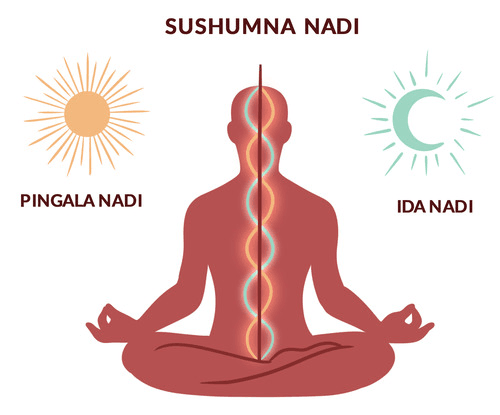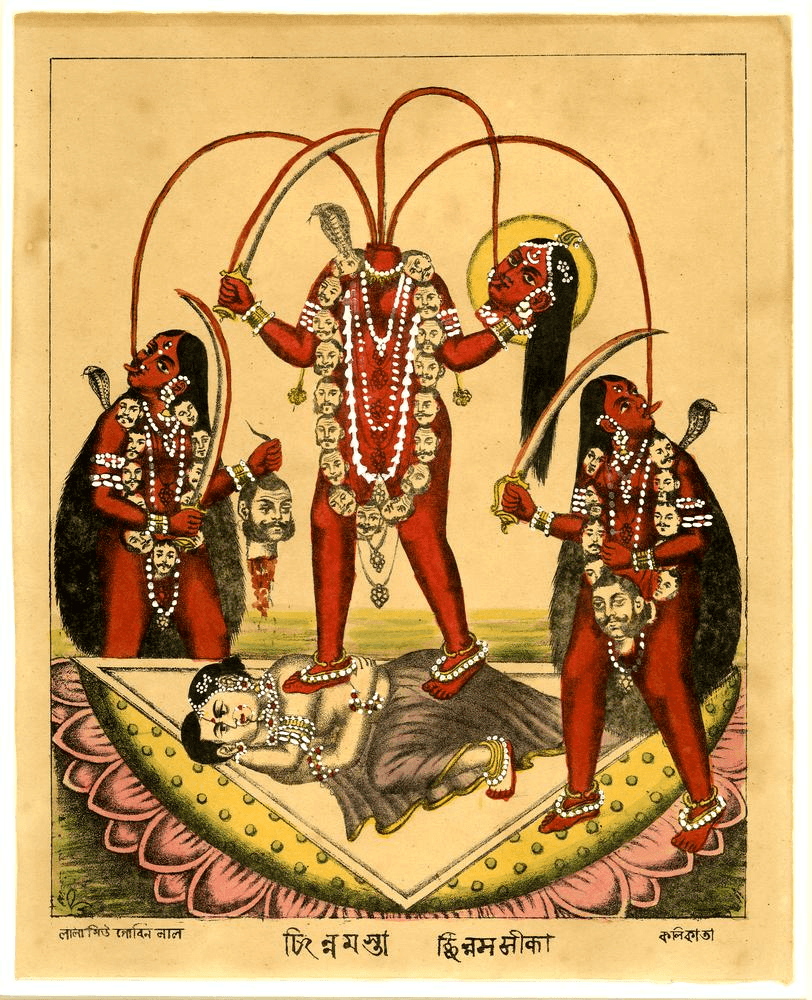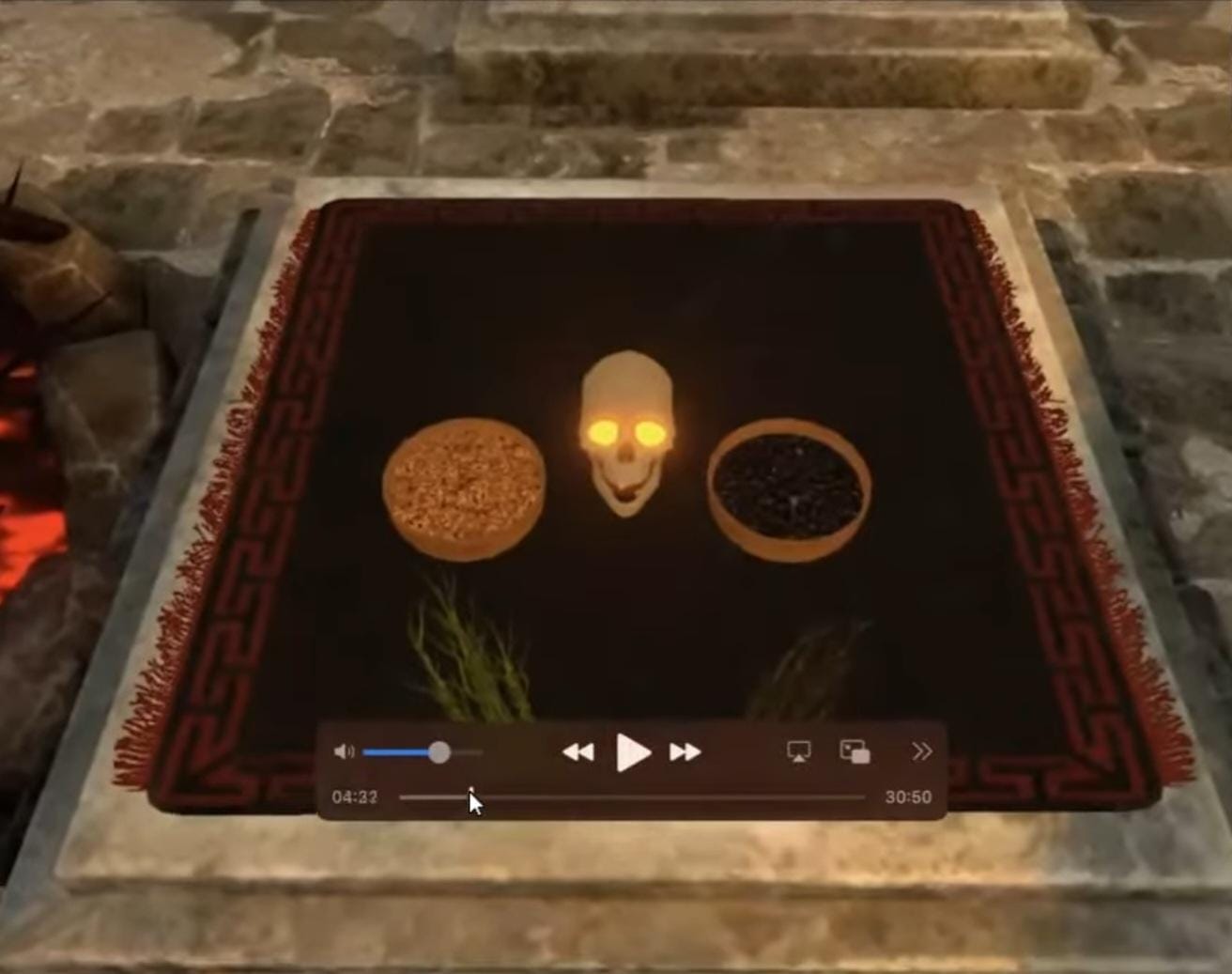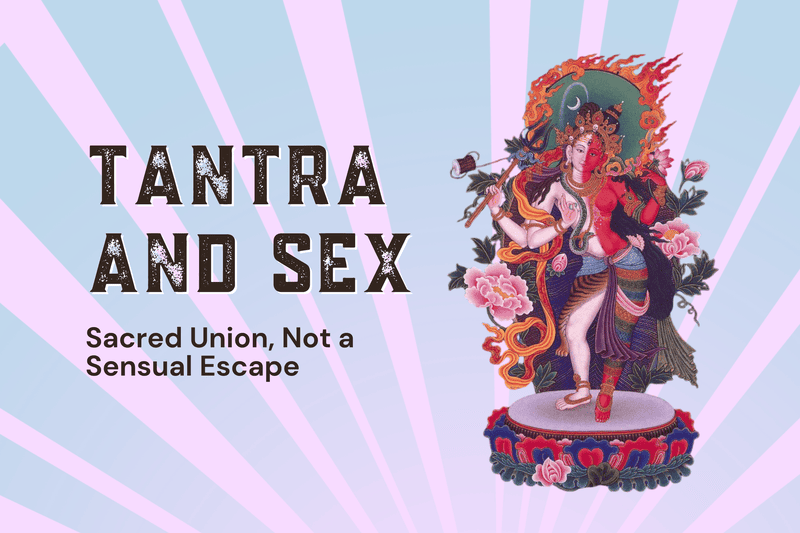हिंदी में पढ़ें
Read and discover the essence of Tantra Sadhana — what it truly means, the common myths that surround it, and the deeper truth behind this ancient spiritual path.
In this article, we will cover:
What is Tantra Sadhana?
Tantra Sadhana is perhaps one of the most misunderstood esoteric sciences.
Let’s take a moment to understand the phrase, ‘Tantra Sadhana’.
The word ‘Tantra’ comes from the root word ‘Tan’, which means to expand and ‘Tra’ meaning instrument. Essentially, Tantra is a tool for expansion or liberation.
‘Tra’ also comes from Trayati, meaning to liberate or protect.
So, the path of Tantra expands inner awareness, liberating or protecting a person from physical, mental and spiritual limitations.
The word ‘Sadhana’ refers to a disciplined spiritual practice performed to attain a goal.
Thus, Tantra Sadhana translates to a system of practices designed to attain spiritual realisation or liberation using mantras, yantras and other yogic techniques as a tool.
According to the primary scriptures of Tantra, like the Kularnava Tantra, Rudrayamala Tantra and Vignanabhairava Tantra, the highest goal of Tantra is to realise the union of Shiva (the divine masculine aspect, i.e, the solar energy channel) and Shakti (the divine feminine aspect, i.e, the lunar energy channel) within oneself.

Pingala Nadi the solar, and Ida Nadi the lunar energy channel. Sushumna Nadi is their union. Image Credits: The 3 Nadis
However, over the years, historical misrepresentation, cultural bias, sensationalisation by the modern media and lack of authentic guidance have created confusion in sincere seekers.
Common Myths
Here are a few of the most common myths about Tantra and the actual truth:
Myth 1
Tantra is all about sex.
Truth
Specific paths of Tantra, like Vamachara, use the body as a tool to rise above societal conditioning and sense of self. These techniques are performed by advanced practitioners under the guidance of a Guru.
One of the biggest misconceptions about Tantra is that it is primarily about sex. This belief stems from:
→ Misinterpretation of some widely used symbols in Tantra
Example: The Yoni (vulva or womb) and Linga (phallus), often misinterpreted as purely sexual symbols, actually represent the Cosmic womb (Yoni) as the source of creation and Pure Consciousness (Linga) as the seed of awareness or awakening.
→ Explicit erotic or fierce iconographies of certain deities in Tantra
This imagery often shocks or confuses those unfamiliar with the tradition. But, in reality, these forms are rich in symbolic meaning, serving as profound spiritual tools.
Example: The most commonly found imagery of Ma Chinnamasta is that of a fierce and radiant goddess, standing naked and self-decapitated, with her severed head in one hand and a bloodied scimitar in the other. Three jets of blood gush from her neck — one flows into her own mouth, and the other two into the mouths of her devoted attendants, Dakini and Varnini, who flank her on either side. She stands or dances atop a copulating couple.

The couple beneath Ma is Kamadeva and his wife, Rati, the God and Goddess of Desire. By standing over the copulating couple, Ma Chinnamasta embodies control over desire and lust. This is neither suppression nor indulgence but complete mastery.
The act of self-decapitation signifies cutting off the clinging ego, while the three blood streams represent the flow of Shakti or Prana (life‐force).
Myth 2
Tantra is a cult of black magic.
Truth
Tantra itself is not black magic. The practices of Tantra are designed to liberate all conditioned beliefs. Sometimes, practitioners can use spiritual attainments with hostile intentions, even in the Vedic tradition.
Tantric rituals often challenge societal norms, moral binaries, and religious taboos. But this is not done out of rebellion or shock-value; it is done with spiritual purpose, to awaken a direct, fearless, and non-dual awareness of the Divine.
Example - The Kapalik Sadhana is done while awakening Ma Kali, one of the Das Mahavidyas.
In this ritual, a human skull is used as a vessel to make offerings. While this may seem like a taboo practice, the human skull simply signifies the submission of our ego to the Divine Mother.

Most religious or moral systems divide the world into: pure vs impure, holy vs profane, ascetic vs sensual, sacred vs sinful.
Tantra sees this duality as illusory (Maya) — it keeps the mind trapped in an ego-based identity.
The philosophy of Sarvam Khalvidam Brahma, given in the Chandogya Upanishad, is echoed strongly in Tantra.
Everything in the universe (seen or unseen, gross or subtle, sacred or mundane ) is ultimately nothing but Brahman, the infinite, eternal, unchanging reality.
Another factor strengthening this myth is cultural misappropriation.
During British rule in India, missionaries and colonial writers vilified Tantra, calling it “diabolic, heathen, and obscene.” They lumped it with black magic, devil worship, and superstition, often without understanding its philosophy.
This orientalist distortion still echoes today in textbooks, media, and popular thought.
Myth 3
Tantra Is Dangerous.
Truth
The practice of Tantra itself is not dangerous. The physical environment where Tantra was once performed, like cremation grounds and jungles, posed certain dangers to an original Tantrik. The locations were meant for the seeker to rise above all fears, including the primal fear of death.
The Tantrik practised in obscure locations which involved physical risks like wild animals, poisonous insects and snakes; lack of food, water, and shelter; exposure to harsh weather; and no protection from theft, injury, or illness.
But the practices were not harmful. If anything, authentic Tantra is a precise, sacred, and deeply transformative path, aimed at eliminating one’s ego, ignorance, and conditioned patterns.
Myth 4
Tantra Is A Shortcut To Self-Realisation And Gives Instant Results.
Truth
Tantra is an intense path where transformation can be rapid. But it is not a shortcut, and results depend entirely on the seeker’s determination and mental strength. And of course, Divine Grace.
Tantra is powerful, but not easy. It is a path of great inner fire (Tapasya) and responsibility. Like in any other path of self-realisation, those walking the path of Tantra Sadhana too will have to go through the spiritual grind of self-purification through intense sadhana to become a realised soul.
As the saying goes, ‘Good things take time.’
So it is with the fruits of Tantra Sadhana as well.
When a seeker will experience the results of their Sadhana cannot be said for sure. It depends on several deeply personal and spiritual factors. There is no fixed timeline, because Tantra is not a mechanical path — it is a living path that is guided by the universal consciousness that responds to the intensity, purity of intention, and readiness of the seeker.
The Truth About Tantra Sadhana
A story by Himalayan Siddha Om Swami demonstrates the essence of Tantra Sadhana:
Deep in the forest, a powerful Tantrik — a seasoned practitioner — built a spot for his Ma Kali Sadhana. Sitting atop a corpse, He chanted her Tantric mantra, yearning for just one divine vision.
One evening, at the peak of his ritual, a tiger came and killed him instantly, leaving his long-sought vision unfulfilled.
A woodcutter, spending the night atop a tree, witnessed the entire ordeal. Seeing the dead Tantrik, he felt neither fear nor hesitation.
Remembering the mantra the Tantrik had chanted, he curiously sat next to the corpse, lit the Tantrik’s ritual fire again, and began to chant the sacred Tantric mantra he had overheard.
With the fifth chant, Ma Kali appeared before him in all her terrifying glory: dark as night, wearing skulls, radiant and sublime.
She asked him, “What do you desire?”
The woodcutter, overwhelmed and bewildered, said, “I see you with just 5 chants, but you didn’t appear to the original Tantrik who chanted your mantra with such deep devotion. Why?”
Ma smiled and said, “Your karmas were ripe for a vision of Me. In a previous lifetime, you died like the Tantrik. You would only have needed to chant my mantra 5 more times for your Sadhana to come to fruition. In this lifetime, now, you did. So, here I am.
“The Tantrik still has a way to go before I appear to him.”
This story reveals how it can take lifetimes to achieve success in Tantra Sadhana. Therefore, the path of Tantra is neither a shortcut nor a promise of instant results.
Thus, Tantra Sadhana, when understood in its true essence, is a profound path of transformation — one that demands sincerity, patience, and inner strength.
Far from being dark or dangerous, it is a disciplined science of awakening that leads the seeker from limitation to liberation.
With the right guidance and intention, it becomes not just a practice, but a deeply meaningful way of life.
Tantra Sadhana App is designed to support this journey by offering structured guidance, authentic resources, and practical tools to help sincere aspirants stay grounded, informed, and spiritually focused as they walk this sacred path.
Join a free expert-guided Ma Kali workshop. With structured practice and a focused group of like-minded Sadhaks, step into the world of Tantra and the Das Mahavidyas.
References: youtube, holybooks.com, wikipedia, hinduonline.co, aghori.it, youtube, archive.org


